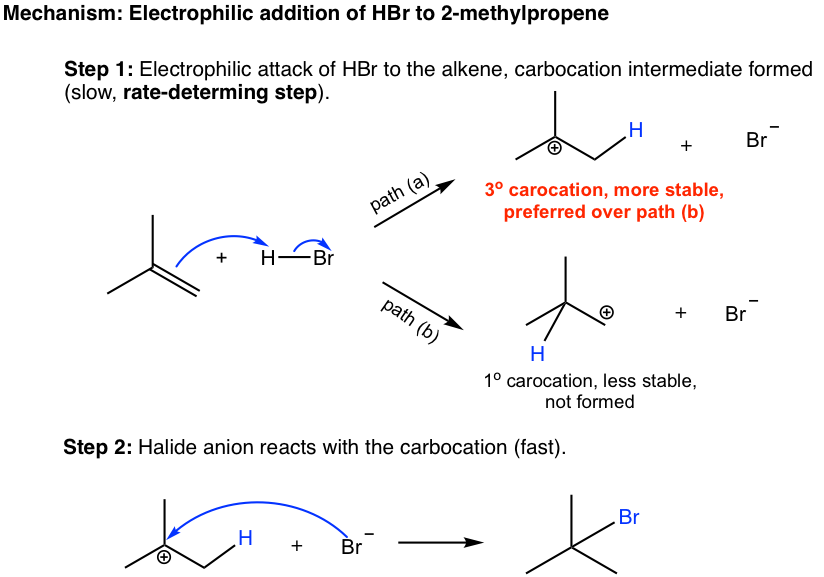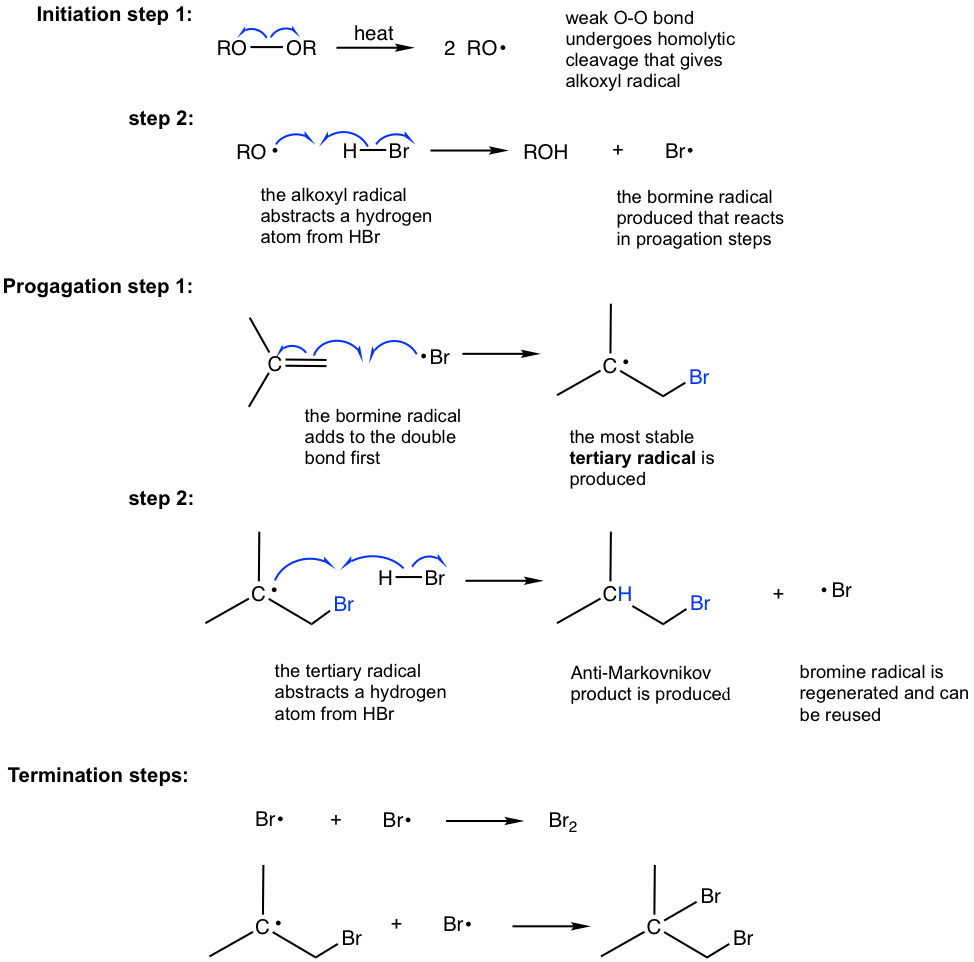Addition of Hydrogen Halides to Alkenes Mechanism
Nucleophilic Substitution S N 2 Versus Nucleophilic Substitution With Internal Return S N i. Download high-res image 850KB Download.

10 2 Reactions Of Alkenes Addition Of Hydrogen Halide To Alkenes Organic Chemistry I
In addition the oxygen atom also has two non bonding electron pairs.

. Addition Reactions of Alkenes. C n H 2n. Thus the carbonyl carbon and the three atoms attached to it lie in the same plane and the π-electron cloud is above and below this plane.
H2O acts as a nucleophile in this reaction. Most of the time the reaction of alcohols with thionyl chloride is taught as an S N 2 reaction. Oxidative addition of aryl and alkyl halides to a reduced iron pincer complex.
The elements of water can be added to the doublebonded carbons of an alkene in either a Markovnikovs or an antiMarkovnikovs manner. 3º-halides will probably give E2 elimination with nitrogen nucleophiles they are bases. Delydrobalogenation of vinyi halides is essentially.
Nitrogen and sulfur nucleophiles will give S N 2 substitution in the case of 1º and 2º-halides. Drawing alkene formulas from names. Electrophilic addition to conjugated dienes occurs through 12 and 14-addition mechanism out of Q.
Given that i Ni0 complexes undergo oxidative addition more readily than NiI complexes with aryl halides and ii NiII complexes are believed to rapidly engage with sp 3 carbon-centered radicals to form NiIII species enabling sp 3 sp 2 and sp 3 sp 3 CC bond formations 15 16 we favor the dual-catalysis mechanism outlined. Markovnikovs Rule with Practice Problems. HBr and HCl to form alkyl halides.
Drawing formulas from names. The energy behavior is shown in Figures 5A and 5B for the two selected alkenes. Select all that apply.
And indeed on primary alcohols this is definitely the case. If the two carbon atoms at the double bond are linked to a different number of hydrogen atoms the halogen is found preferentially at the carbon with fewer hydrogen. The mechanism of alkyne hydrogenation is identical to that of the alkenes.
A recent application is the generation of highly reactive aryl radicals which are useful arylating reagents in synthesis by photoinduced electron transfer PET from photoredox catalysts to suitable precursors followed by bond scission 8 9However the choice of aryl radical precursors is currently limited to electron-poor arenes such as diazonium 6 10 or. There are 3 mechanisms suggested for the elimination reactions. Drawing alcohol formulas.
The antiMarkovnikovs addition results from a hydroborationoxidation reaction. Most of the reactions involving the preparation of alkenes involve elimination process. This concept of redox active ligands has resulted in new base metal catalysts for the asymmetric hydrogenation of alkenes as well as the hydrosilylation and hydroboration of olefins.
Drawing alkyne formulas from names. In high dielectric ionizing solvents S N 1 and E1 products may be formed. The addition of hydrogen bromide to 1butyne gives 2bromo1butene as the major product of the first step.
In case of unsymmetrical alkenes the addition reaction takes place in accordance with Markovnikovs rule Unit 13 Class XI. Mechanism of Dehydration of Alcohols. The reaction intermediate is an epoxide.
Which of the following options correctly describe the mechanism of acid-catalyzed hydration of an alkene. CH 3 CHCH 2 HI CH 3 CHICH 2 H. Alcohol dehydration is an example of an elimination reaction which is quite the opposite of substitution reaction and addition reaction.
Alkenes react with water in the presence of acid as catalyst to form alcohols. As shown in the following figure a hydrogen ion catalyzes the Markovnikovs addition. Drawing formulas from names.
Mechanism The mechanism of the reaction involves the following three steps. S N 1 S N 2 E1 E2 How to Choose the Mechanism. Matching alcohols to their names I.
Secondary alcohols get oxidized to ketones and primary are oxidized to carboxylic acids by chromic acid. S N 1 S N 2 E1 or E2 the Largest Collection of Practice Problems. SOCl 2 Mechanism With Alcohols With And Without Pyridine.
Hydrohalogenation is the addition of hydrogen halides such as HCl or HI to alkenes to yield the corresponding haloalkanes. Preparation of Hydrocarbons Alkenes. Drawing formulas from names.
Acid-Catalyzed Hydration of Alkenes with Practice Problems. From alkenes i By acid catalysed hydration. 1212 Structure of the Carbonyl.
All these eliminations are β- eliminations. Water hydrolysis will be favorable for 2º 3º-halides. The first step involves addition of H to the CC double.
The second step involves addition of an OH- to a carbocation. Hydrogen halides react with alkynes in the same manner as they do with alkenes. Because the hydrogen is absorbed on the catalyst surface.
The Role of the Solvent in S N 1 S N 2 E1 and E2 Reactions. The bond angles are approximately 120 as expected of a trigonal coplanar structure Figure 121. Formation of alkenes.
With acrylamide the reaction barrier of the second mechanism was found to be 145 eV which is 03 eV lower than the barrier 171 eV for methacrylamide. Benzyl C 6 H 5 CH 2.

Electrophilic Addition Reactions Of Alkenes Mcc Organic Chemistry

9 2 Addition Of Hydrogen Halides To Symmetrical Alkenes Chemistry Libretexts

10 2 Reactions Of Alkenes Addition Of Hydrogen Halide To Alkenes Organic Chemistry I

Electrophilic Addition Of Hydrogen Halides To Alkenes Youtube
Comments
Post a Comment